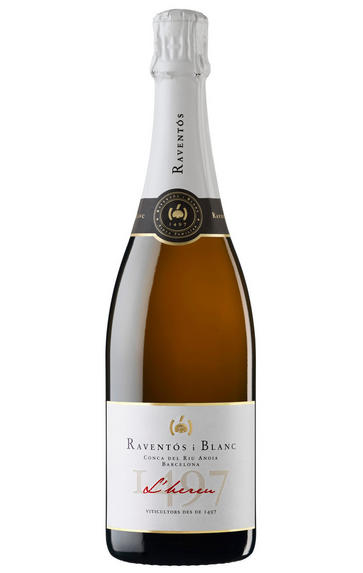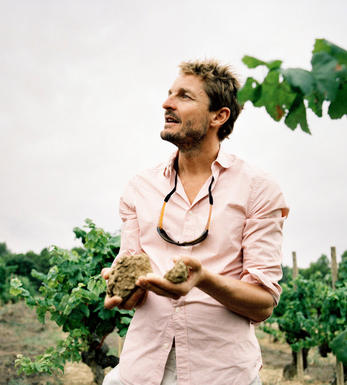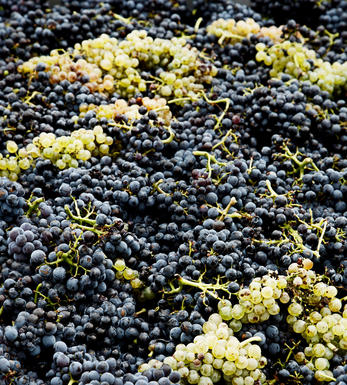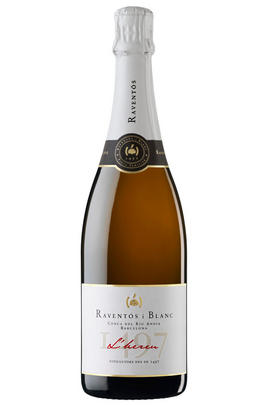
Critics reviews
Pepe Raventos is the 21st generation of Raventos growing grapes in Penedes, a family with a long tradition as vine growers (since 1497) and as producers of bottle-fermented sparkling wines (since 1872). His grandfather left Codorniu because of disagreements in the management of the company, and in 1986 started his small project based on the fruit of his property, as he was the heredero (the heir of the family) of the original vineyard. As Pepe Raventos, who is now in charge of winemaking and the direction of the company, explained, the climate here (Mediterranean) is more apt for less intervention in the vineyards. Raventos is, of course, a very famous name in the Cava world, as it was Josep Raventos Fatjo who in 1872 produced the first sparkling wine in the region. A branch of the Raventos family still owns and runs Codorniu today. Pepe started working for the family winery in 2000, having studied agriculture in Madrid. In 2005, he studied with Didier Dagueneau and he also did internships with Hubert Lamy in Burgundy and in Nahe and Champagne with small producers.
Since 2009, he has been working in what he calls bio-synergy, which can be considered a personal adaptation of biodynamics, paying very much attention at the interactions between soil, microclimate, plants, animals and men. They take care of plants and animals with homeopathic and organic treatments and use vegetal and animal compost from their own estate to enrich the soil.
In October 2012, the company took another turn and left the Cava appellation to focus on producing wines from their 60-hectare vineyard in Sant Sadurni d’Anoia and trying to promote a new appellation, the Conca del Riu Anoia, on the banks of the Anoia river, where they are located within Penedes. He is the son of Manuel Raventos and is currently the winemaker. He moved to New York with his wife and four small children three years ago so the kids would learn good English, for him to get a better insight of the American wine market, and so he could manage the company from there. Today, they produce around 700,000 bottles of wine per year, mostly sparkling, which is now sold as a generic sparkling wine appellation. His idea of how the new appellation should work, and the way he’s already working, is using exclusively Mediterranean grapes, 80% of them estate grown. Wine producers can complement their own grapes by purchasing Mediterranean varieties grown by others in the region at a sustainable price, not at a going rate of 0.2 per kilo, and the wines should have at least 18 months of bottle aging in contact with the lees. Pepe is a young, determined man with clear ideas.
The wines they call Enoteca Personal Manuel Raventos are to the Gran Reserva Personal Manuel Raventos what RD from Bollinger is to their Grande Annee – the same wine disgorged much later. They still have to sort out the labeling to really be able to see clearly if one bottle is Enoteca or Reserva Personal, but they are getting there. There are only a few hundred bottles of these wines, and I tas
Decanter, Nov 2015
About this WINE

Raventos i Blanc
The Raventos family have a viticultural tradition dating back to 1497, making them one of the oldest continuous vineyard owners in the world. Josep Maria Raventos i Fatjo is credited with producing the first Cava in 1872, creating a legacy that the following generations take very seriously. In 1986 Josep Maria Raventos i Blanc decided to sell his share of Cordoniu, then under the ownership of the family, keeping the best vineyards for the newly created Raventos i Blanc estate (46 plots each of them with a completely distinct identity). The focus since has been on quality and regionality, in particular expressing the special properties of the terroirs around Saint Saturni d’Anoia.
The sparkling wines are made using only the indigenous varieties Xarel-lo, Parellada, Macabeo and Monastrell and show real depth, expression and longevity. Current proprietor, Pepe Raventos, places high importance on the health of the vineyard environment creating a biosynergy where the animals, the vines, the soil and the people work together as an agricultural unit. The estate reached its certified organic status in 2012.
As of 2013, Raventos i Blanc are no longer part of the Cava DO and have started the process of creating a new, terroir driven appellation, Conca del Riu Anoia (the proposed delimited area covers the are between the Mediterranean Sea and the Catalan mountains spanning between the river Anoia and river Foix.)
The decision to leave the DO stemmed out of the desire to set a standard in high quality wine production where rules such as the use of only indigenous grapes, ecological viticulture (100% Biodynamic), estate produced and estate bottled fruit and minimum ageing requirements apply (18 months). In the words of Pepe Raventós the aim behind this new proposed appellation is " to recover the name Conca del Riu Anoia: a small geographical area, to help us to better understand and convey our viticultural traditions, the strength of our land, our unique grape varieties and the characteristics of our soils"

Other Varieties
There are over 200 different grape varieties used in modern wine making (from a total of over 1000). Most lesser known blends and varieties are traditional to specific parts of the world.



Buying options
Add to wishlist
Description
Decanter World Wine Awards 2015 – Regional Trophy Winner - Spanish Sparkling Wine over £15
Aged for 18 months and dosed with 8.5 grams of sugar, this is an exemplary, youthful Cava. Its orchard fruit freshness is complemented by notes of Mirabelle plum, honeysuckle and verbena; there is a finely tapered finish and an elegance that one had now better come to expect from the very top wines in this category. Drink 2014-2016
Simon Field MW - Wine Buyer
wine at a glance
Delivery and quality guarantee